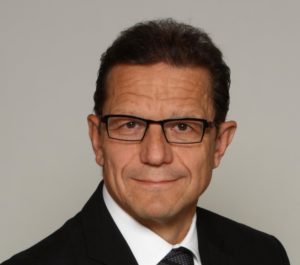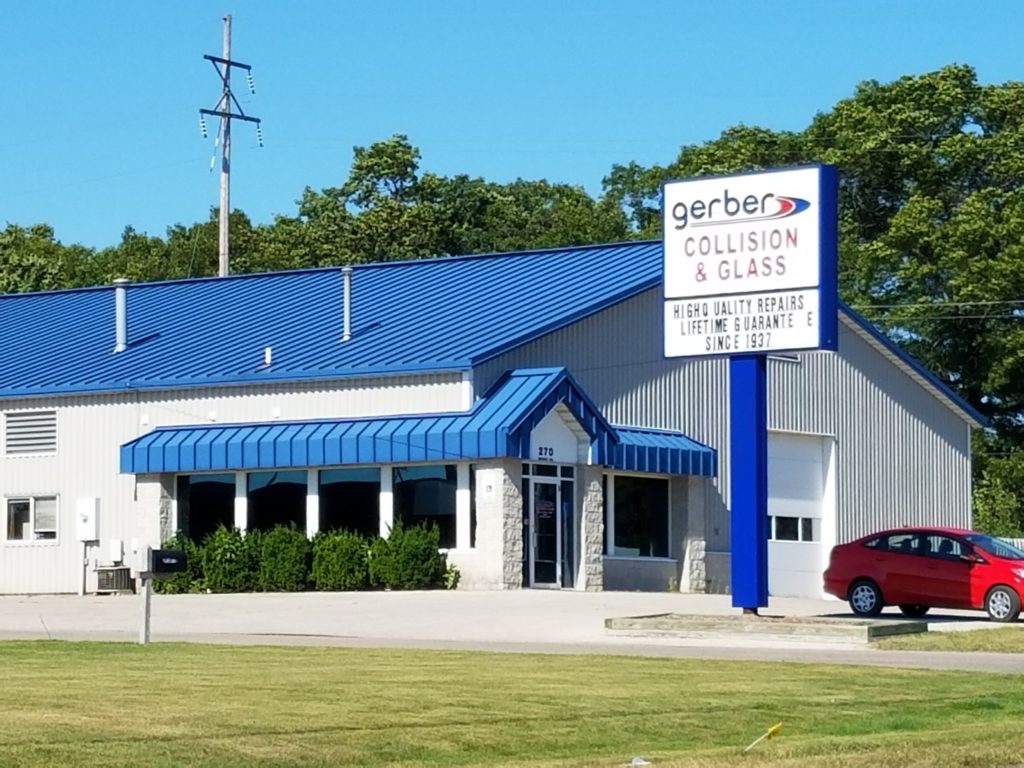
Boyd/Gerber talks about impact of parts, intake centers on margins
By onBusiness Practices | Insurance | Market Trends | Repair Operations | Technology
Gerber Collision parent the Boyd Group this month reported lower margins but an improved ratio of expenses to sales last quarter and flagged conditions like parts prices and intake center business models as relevant contributors to one or both of the trends.
The publicly traded Boyd Group includes more than 400 Gerbers in the U.S. and more than 120 Boyd Autobody and Assured Automotive facilities in Canada. Its earnings reports and analyst calls are a good source of information about industry trends that could be affecting everyone from the Big 4 MSO level to the tiniest single-shop location.
The Winnipeg-based Boyd Group saw its gross margin fall from 46.4 percent in April-June 2017 to 46 percent in Q2 2018, the company reported Aug. 10.
CEO Brock Bulbuck said Assured Automotive, which Boyd formally purchased July 2017, delivered lower gross margins because of its higher sales sourcing cost to generate demand. However, this was “more than offset” by Assured’s ability to leverage operating costs and use more of its capacity, he said.
Assured Automotive does significant business through intake centers, which are basically dealership-located storefronts that collect vehicles and send them to an actual Assured body shop somewhere else. This captures business for Assured and helps the dealerships retain customer loyalty. At the time Boyd announced it would buy Assured, the company had nearly as many intake centers as body shops.
The Assured centers also predominantly do DRP work, Bulbuck said last year, and he told an analyst Aug. 10 that the “very strong” relationships with insurers and associated performance pricing lead to lower margins. (It’s unclear if the centers pay any concession to the dealerships as well.)
Following the Assured purchase, Boyd opened five Gerber intake centers in the U.S., including three last quarter.
The Aug. 10 discussion was interesting in light of a Collision Industry Conference presentation that week suggesting intake centers could be a useful business model for other shops to adopt amid changing market conditions.
Bulbuck said the company’s quarterly gross margin also was affected by higher parts margins.
Also on that topic, Bulbuck noted that “for the most part, we are protected with pass-through pricing” from any U.S. parts tariffs, for Boyd would just transfer the amount to its customers.
Parts are bought at a discount and sold to an insurer at list, and sometimes the company is “allowed a margin markup on them,” according to Bulbuck. Price inflation there would be passed upon to carriers or customer-pay work, though “well over 90 percent” of the company’s business is insurer-paid.
“On materials, we do not have pass-through pricing,” Bulbuck said. Instead, Gerber charges insurers based upon a market materials rate that adjusts periodically like the labor rate “but not lockstep” with a marketplace pricing increase, he told an analyst.
Operating expenses rose from $142.8 million to $167.4 million CAD ($110.6 million to $129.65 million USD) but fell as a percentage of sales from 37.2 percent to 36.7 percent because of same-store sales growth, more locations and lower expense ratios in the Assured business, Bulbuck said. He did note that the company’s expanded benefits package for employees had made a 0.3 percentage point impact here.
Other than the benefits cost, most of the company’s other expense gains should be fairly routine, though the company’s indirect labor pressures might be higher than usual given the tight labor market, according to Bulbuck. Rent wasn’t increasing at a higher rate than it had in the past, he said.
Overall, the company’s adjusted earnings before taxes, interest, depreciation and amortization as a percentage of sales (a more accurate profit margin gauge) came in at 9.3 percent, up from 9.2 percent of sales in the second quarter of 2017. This reflected the lower expense ratio and the leverage from same-store sales growth, Bulbuck said.
Learn more about handling your own bottom line during Repairer Driven Education
Wondering about your own margins and balance sheet after reading how Gerber’s doing? Learn more during the SEMA Show in Las Vegas at “Gauges of Your Business: Maximize Profits in Your Collision Shop” with Jim Anderson of DRIVE, “4 Steps to Set Proper and Profitable Labor Rates for Your Individual Shop” with Sam and Richard Valenzuela of National AutoBody Research and “Auto Body Growth Hacks” with Ryan Taylor of Bodyshop Booster and Mathew McDonnell of Big Sky Collision. The sessions are part of the Society of Collision Repair Specialists Repairer Driven Education Series Oct. 29-Nov. 2. Register here for individual RDE classes or the series pass package deal.
Though Boyd/Gerber had only spent 1 percent of its $909.9 million CAD ($707.73 million USD) in sales on capital expenditures during its first half, Bulbuck told analysts his company still expected to overall shell out 1.6 to 1.8 percent of its sales on capital items this year.
He chalked this up to “emerging vehicle technologies requiring new, specialized repair equipment, as well as evolving information technology requirements.”
“… Making proactive investments will position us to meet anticipated market needs,” Bulbuck said. “Whereas we expect that many other collision repairers will not be making these investments.”
The company’s message to investors predicts Gerber often will able to lease larger purchases.
More information:
“Boyd Group Income Fund Reports Second Quarter 2018 Results”
Boyd Group, Aug. 10, 2018
Boyd group second-quarter 2018 earnings call
Boyd Group, Aug. 10, 2018
Boyd Group second-quarter 2018 report
Boyd Group, Aug. 10, 2018
Images:
Boyd Group CEO Brock Bulbuck. (Provided by Boyd Group)
A Gerber Collision in Manistee, Mich., is shown. (Julie Dawes/Repairer Driven News)


